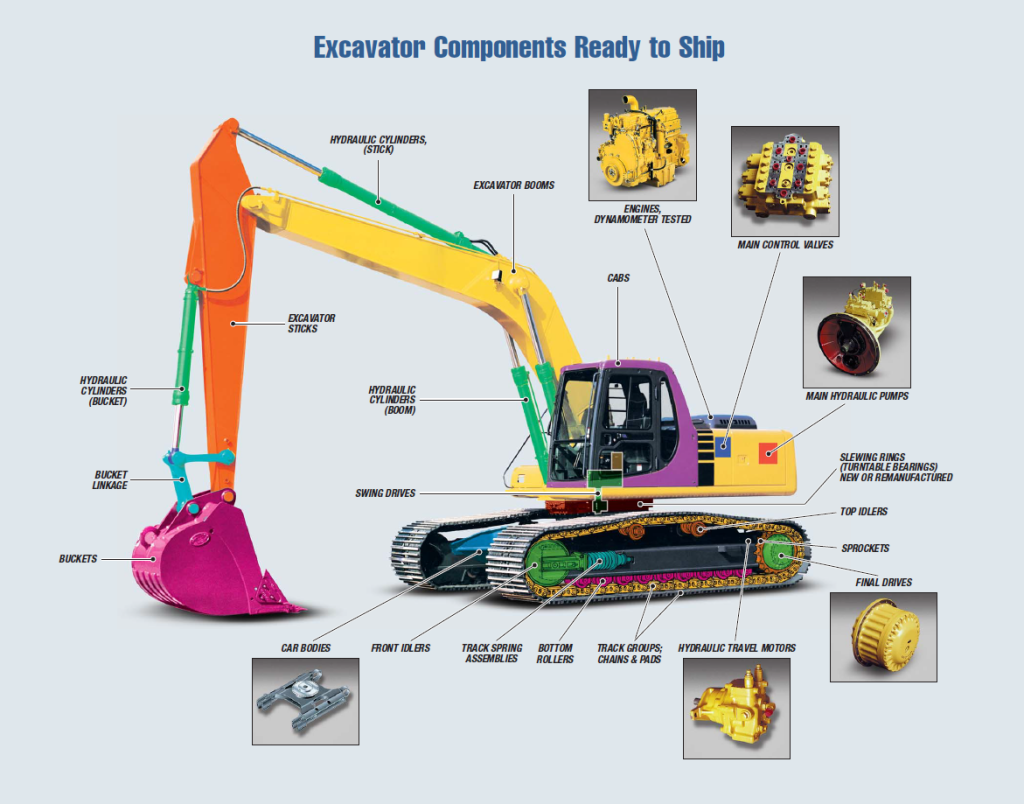Excavators are powerful machines widely used in construction, mining, and various other industries. Understanding the parts of an excavator is essential for effective operation, maintenance, and repair. Below is a detailed breakdown of the main components.
Main Parts of an Excavator
1. Boom
- The boom is the long arm that extends from the main body of the excavator.
- It is responsible for reaching out and lifting materials.
2. Stick (or Arm)
- The stick is attached to the end of the boom.
- It allows for further extension and maneuverability, providing greater reach for digging and lifting.

3. Bucket
- The bucket is the attachment at the end of the stick.
- It is used for digging, scooping, and moving materials.
- Different types of buckets exist for various applications, such as digging, grading, or trenching.
4. Cab
- The cab is the operator’s compartment where controls are located.
- It is designed for comfort and visibility, ensuring the operator can see the worksite clearly.
5. Tracks or Wheels
- Excavators can be equipped with either tracks or wheels.
- Tracks provide better stability and traction on uneven terrain, while wheeled excavators are more mobile on paved surfaces.
6. Counterweight
- The counterweight is located at the rear of the excavator.
- It helps balance the machine, preventing it from tipping over during operation.
7. Hydraulic System
- The hydraulic system powers the movement of the boom, stick, and bucket.
- It consists of hydraulic pumps, cylinders, and fluid, allowing for smooth and precise operation.
8. Undercarriage
- The undercarriage includes the frame, tracks, and rollers.
- It provides support and stability to the entire machine.
Additional Components
Control System
- The control system includes levers and pedals that allow the operator to maneuver the excavator.
- Modern excavators may have electronic controls for enhanced precision.
Engine
- The engine powers the excavator and can vary in size and type, often being diesel-powered for heavy-duty tasks.
Electrical System
- The electrical system manages various functions such as lighting, alarms, and navigation systems.
Conclusion
Understanding the parts of an excavator is crucial for anyone involved in construction or heavy machinery operation. Each component plays a vital role in the machine’s overall functionality and efficiency. By familiarizing yourself with these parts, you can ensure better maintenance, operation, and safety in your excavating tasks.